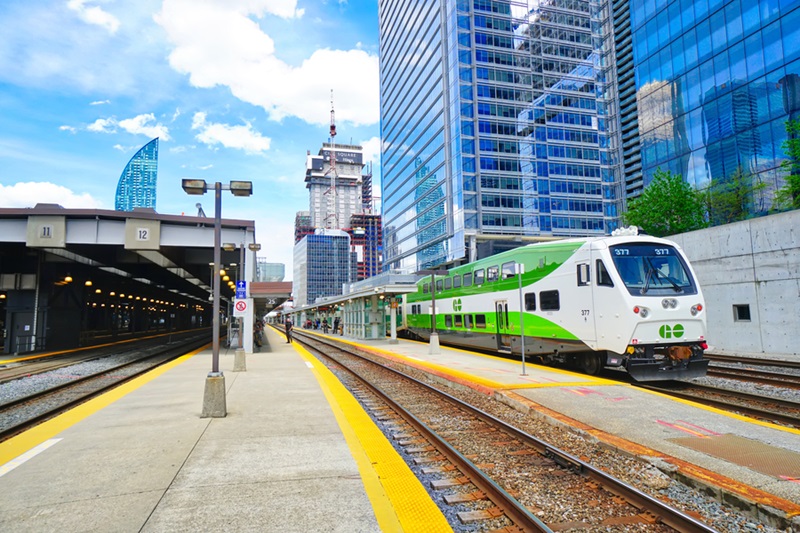A better route to deliver rail infrastructure
At the heart of the world’s most livable cities, urban rail systems serve as a catalyst to connect people, places and opportunities within and between metropolitan areas. They play a crucial role attracting investment in social and economic development, while also reducing traffic congestion and emissions to improve the productivity, safety and wellbeing of the population and the environment.
Rail transit projects are inherently complex. These extensive programs rank among the largest public infrastructure investments - not only in terms of capital expense - but also in the number of people served and the social, environmental and economic value they generate.
Yet, the most significant complexities associated with these programs have little to do with the physical infrastructure itself. Construction challenges have been met and improved upon throughout the history of rail transport. From century-old tunnels to long-span bridges enabling trains to traverse varied terrain and waterways, innovations around the globe attest to the ingenuity of engineers when it comes to solving problems.
Higher stakes stem from human interests; the myriad of perceptions, mindsets, and motivations held by stakeholders, shaped by respective personal experiences and community influences.
Imagine a “spaghetti chart” mapping project variables from pre-planning and design, through construction, operation, and maintenance. Attached to each phase are numerous contracts, reviews, schedules and activities tied to hundreds of suppliers and specialists, not to mention essential systems like utilities. All of these factors must come together in the right combination to serve multiple jurisdictions and diverse stakeholders, whose social, economic, and political interests require careful consideration. Map every issue and point where these variables intersect, and you have a web of interdependencies and complications that affect costs, plans and opportunities, for better or worse.
In a new era that will see historic investments in public infrastructure and resilience projects, the stakes to deliver these programs will only continue to rise, given workforce shortages and inflation of land, material, equipment, and financing costs. Add social equity requirements and rising stakeholder activism to the mix, and it’s clear that we need a lot more coordination and collaboration to deal with all those “spaghetti strands”.
This moment presents a pivotal choice for the way we deliver infrastructure: We can either remain stuck in the status quo for the risk of getting it wrong, or we can embrace new methods for the opportunity to get it right.
In my experience, the delivery partner approach makes all the difference to get it right.
Avoiding entanglements
Urban rail projects generate a wide web of interfaces, where the strength of the entire operation can only be assured by the integrity of each thread and the connections between them. Such intricate infrastructure programs benefit from an experienced partner that is invested in delivering the best possible outcomes for everyone concerned.
The delivery partner model epitomizes this. Underpinned by a multi-disciplinary, end-to-end approach, what differentiates this contracting model from traditional design-build or integrated program management methods is that it establishes a singular team culture from the start, by aligning the sponsor organization and entire supply chain around a shared vision.
This not only builds clarity and internal cohesion; it also enables the team to work proactively together through interfaces and interdependencies to prevent disconnects downstream—especially as construction progresses.
Rail programs in particular benefit from the expert knowledge and proven practices a good delivery partner brings, including contingencies, lessons learned, and a bench of ready resources to resolve common issues that tend to derail project plans, like disruptions to vehicle and pedestrian traffic, and access to local businesses and community resources. When the team is equipped to anticipate and respond with agility to such challenges, it helps to keep budgets and schedules on track.
The approach also enables greater consistency, continuity and transparency by driving the entire supply chain to work with common purpose toward clear objectives, backed by integrated systems that codify operating processes, data, and project controls.
With compensation tied to performance objectives, the delivery partner leverages its experience to build a high-performing project team with a strong supporting cast of qualified specialists and suppliers. Further, the partnership formalizes knowledge sharing to sustain system performance beyond the scope of the program, and ultimately improves delivery certainty and outcomes for infrastructure sponsors and stakeholders.
Over more than a decade since establishing the delivery partner model for the Olympic Development Authority in London, Mace has proven this approach with successful delivery of complex projects around the world. Recent examples include Peru’s national infrastructure reconstruction and resilience program, delivery of Tiffany & Co’s new flagship and headquarters in New York City, and rail transit partnerships for Toronto’s Metrolinx Go Expansion and subway system extensions.









